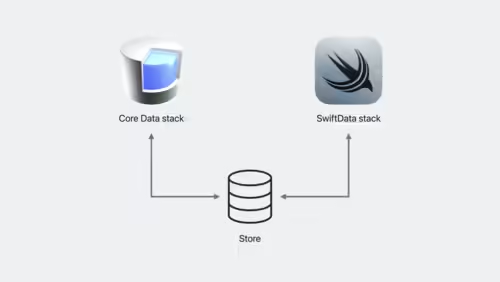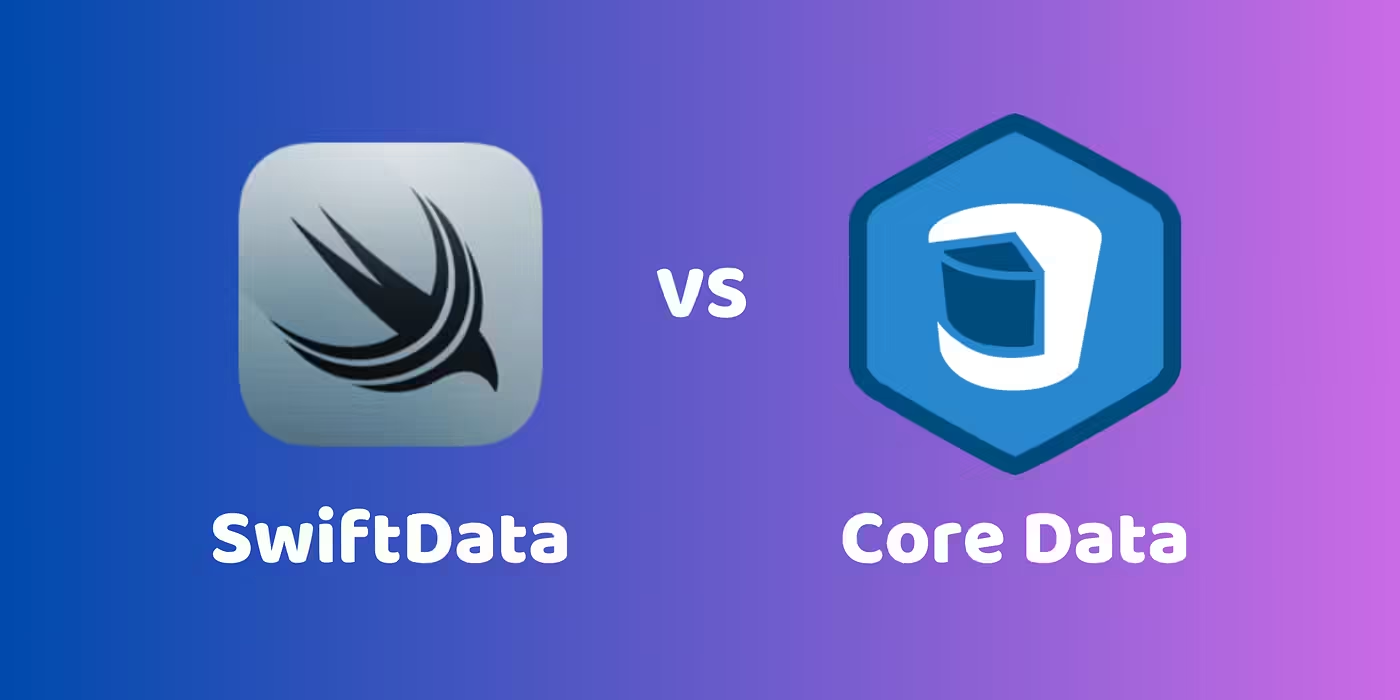When it comes to data storage in iOS app development, Core Data has been the go-to choice for over a decade. But with the introduction of SwiftData, Apple has provided developers with an alternative designed to complement Swift’s syntax and modern programming patterns. With 2024 well underway, developers face an important question: SwiftData or Core Data—Which should they choose?
In this post, we’ll dive into both frameworks, examining their strengths, weaknesses, and the ideal scenarios for each.
Understanding Core Data
Core Data is a tried-and-true framework for managing and persisting data in iOS, macOS, and other Apple platforms. Known for its robustness, Core Data allows developers to model complex data relationships and provides built-in support for managing an app’s object graph and data persistence.
Key Features of Core Data:
- Powerful Data Modeling – Core Data supports complex data models and object relationships, including one-to-one, one-to-many, and many-to-many relationships.
- Data Persistence – It allows seamless storage and retrieval of data on the device, making it essential for apps that need offline access.
- Managed Object Context – Core Data uses managed object contexts to track changes, support undo functionality, and manage relationships, all while keeping memory usage efficient.
- Performance Optimization – Core Data is optimized for large datasets and includes features like lazy loading and efficient memory management.
However, despite its strengths, Core Data has its limitations. For example, its Objective-C roots sometimes make it clunky to work with in Swift, and its syntax can feel verbose and complex.
SwiftData: A New Contender
Introduced at WWDC 2023, SwiftData is Apple’s answer to the demand for a Swift-native data storage solution. Built from the ground up to integrate seamlessly with Swift’s language features, SwiftData aims to simplify data management for iOS developers.
Key Features of SwiftData:
- Swift-First Approach – SwiftData is built with Swift in mind, utilizing Swift’s syntax, type safety, and coding conventions, making it much easier for Swift developers to work with.
- Simplified API – With a more concise API, SwiftData reduces the boilerplate code required for data storage and retrieval, allowing for a cleaner, more readable codebase.
- Concurrency Support – Designed to handle concurrency natively, SwiftData makes it easier to avoid data races and inconsistencies, which is especially useful in apps with complex data flows.
- Reactive Programming Support – SwiftData works seamlessly with SwiftUI’s data-binding capabilities, making it an excellent choice for apps that rely heavily on reactive programming.
While SwiftData is easier to use with Swift and more streamlined than Core Data, it’s still a relatively new framework. This means it may lack the maturity, extensive tooling, and comprehensive documentation that Core Data has accumulated over the years.
Comparing SwiftData and Core Data
| Aspect | Core Data | SwiftData |
|---|---|---|
| Language Integration | Objective-C, with Swift support | Swift-first, native Swift API |
| Ease of Use | Complex setup, more boilerplate | Streamlined API, less code |
| Performance | Highly optimized for large data | Optimized for Swift, efficient |
| Concurrency | Supports concurrency, complex API | Native concurrency, simpler |
| Data Binding | Limited support in SwiftUI | Strong integration with SwiftUI |
| Documentation | Extensive, mature | Growing, still maturing |

When to Use Core Data in 2024
Despite SwiftData’s advantages, Core Data is still a powerful choice for many applications, particularly those with complex data models or those requiring extensive performance optimization. Here are scenarios where Core Data is the better choice:
- Legacy Projects: If you’re working on an app that already uses Core Data, transitioning to SwiftData might be more trouble than it’s worth.
- Complex Relationships: Core Data’s mature object graph and relationship management make it ideal for complex data structures.
- Performance-Critical Applications: Core Data’s optimizations for large datasets can handle heavy lifting for data-intensive apps.
If you need a proven framework with mature tooling and documentation, Core Data remains an excellent choice.
When to Choose SwiftData in 2024
For new projects or those heavily reliant on Swift and SwiftUI, SwiftData might be the better option. Here are situations where SwiftData excels:
- Swift-Only Projects: If your project is entirely in Swift, SwiftData’s syntax and API will make development faster and more intuitive.
- Reactive Apps with SwiftUI: SwiftData’s seamless integration with SwiftUI makes it ideal for apps that use data binding and reactive programming.
- Simpler Codebase Needs: If you’re looking to build an app quickly and want a streamlined data management solution, SwiftData provides a cleaner, more modern API that fits naturally within Swift’s ecosystem.
SwiftData is an excellent choice if you value simplicity and plan to stay within Apple’s latest Swift and SwiftUI frameworks.
Making the Right Choice for Your Project
Ultimately, the choice between SwiftData and Core Data will depend on the specific requirements of your project. Core Data remains a powerful and versatile option, particularly for larger projects or those requiring robust data modeling. Meanwhile, SwiftData is an attractive alternative for developers seeking simplicity, ease of use, and better integration with SwiftUI.
If you’re developing a new app in Swift and plan to leverage SwiftUI’s capabilities, SwiftData is likely your best bet. However, for long-term or complex projects with intricate data models, Core Data remains a reliable and battle-tested solution.
Conclusion
With SwiftData and Core Data offering unique advantages, iOS developers in 2024 have two compelling data storage solutions. SwiftData’s Swift-first approach and seamless SwiftUI integration make it an appealing choice for new Swift-focused projects. Conversely, Core Data’s maturity and extensive documentation make it ideal for larger and more complex applications. By evaluating your project’s specific needs, you can determine which framework will provide the best foundation for your app’s data handling requirements.
External Links
- Introduction to SwiftData - Apple Developer Documentation
- Core Data Guide - Apple Developer Documentation
- SwiftData vs Core Data: Choosing the Best Data Solution - Ray Wenderlich

